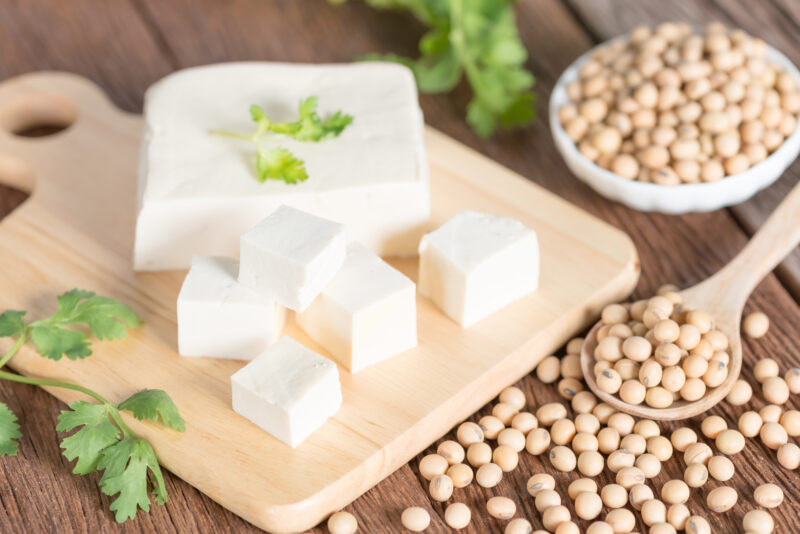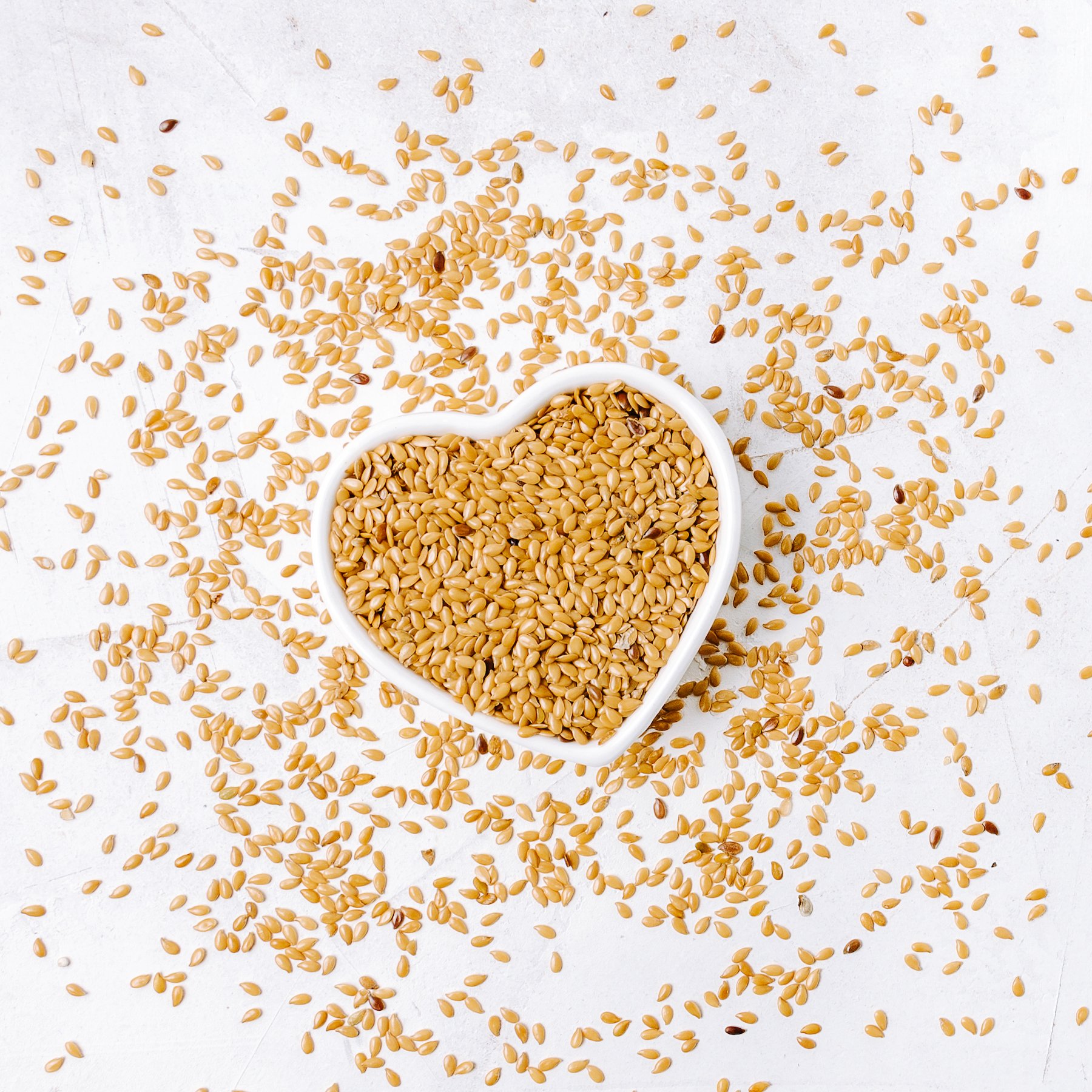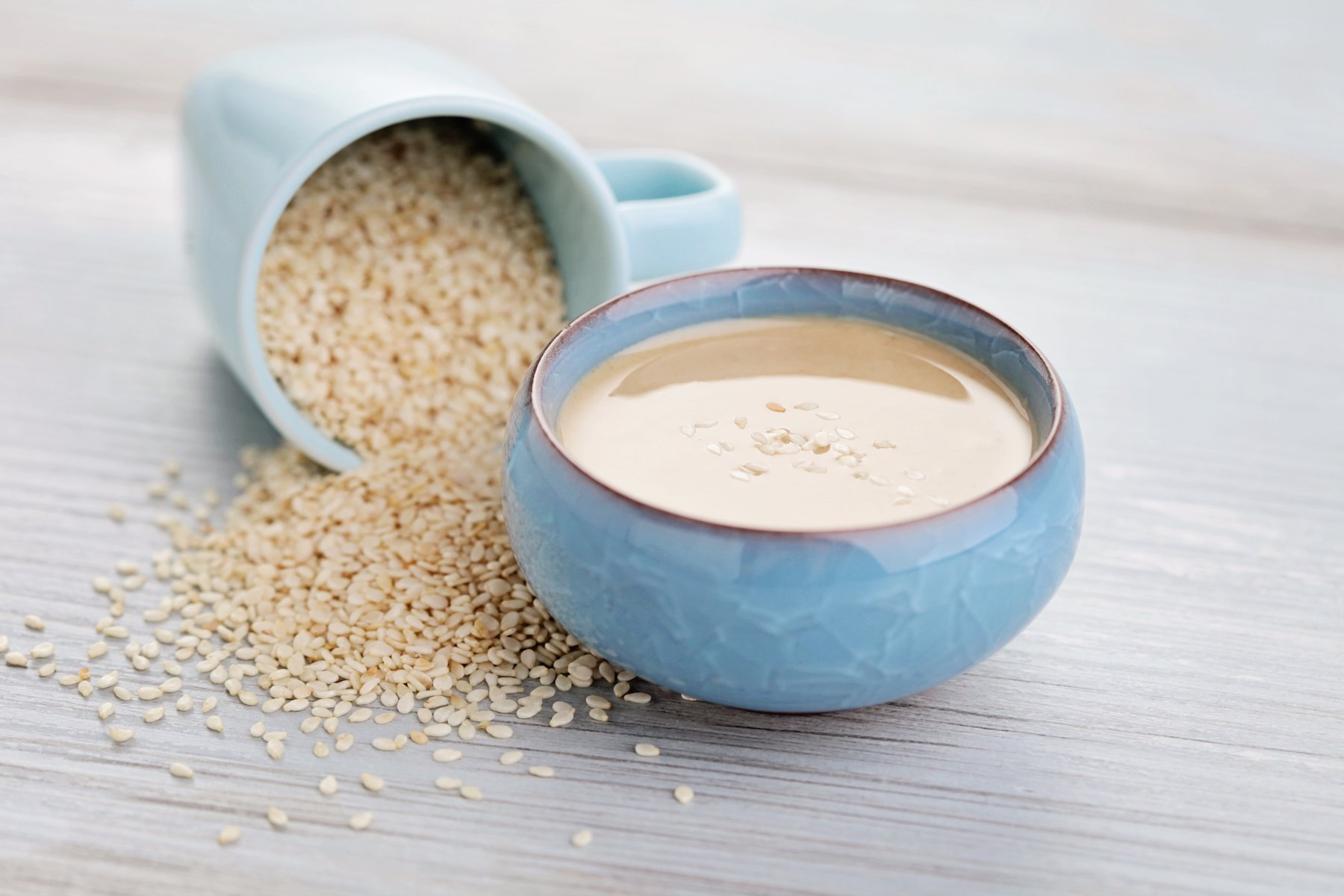Tofu Basics
Outside of plant-based and vegan communities, people often assume soy-derived tofu is bland or boring or that making it the star of a dish means compromising flavor or, worse, health.
But fears about tofu and soy, in general, have been overblown, with much of the current research suggesting that eating these foods is beneficial for hormone balance and metabolic health. And, even if you’re an omnivore, there are many delicious methods to prep and cook tofu.
Also referred to as “bean curd,” tofu is typically made by combining soy milk with coagulants (such as calcium and magnesium chlorides and sulfates) to separate the protein-rich curds from the whey. The curds are then put into molds, pressed to remove excess moisture and cut into blocks. Tofu is believed to date back to the Han Dynasty (about 2,000 years ago) and has been a prominent protein in Chinese, Japanese, Korean, and Southeast Asian diets ever since.
Basic firm block tofu is low in carbohydrates and high in protein, so it’s unlikely to spike blood sugar. Per ½-cup serving, tofu has 181 calories, 22 g protein, 11 g fat (1.6 g sat fat), 3.5 g carbohydrates, and 3 g fiber. Depending on the coagulant used and how the tofu was processed, it may contain a significant amount of calcium, but this varies by brand.
Tofu’s Metabolic Punch
Tofu is a denser source of protein than whole cooked soybeans (like edamame), or pretty much any whole plant food. That’s because tofu consists of the condensed, protein-rich curd, while the carbohydrate-rich whey is drained off during processing. Even better, tofu is a “complete” protein, containing all nine essential amino acids our bodies can’t make on their own.
Eating adequate protein at a meal slows the rise in blood sugar. That’s because consuming protein causes your upper intestines to release a hormone called cholecystokinin. This keeps food in the stomach longer, slowing the entry of glucose into the bloodstream.
Swapping in tofu for a serving of meat or dairy now and then—particularly if you lean heavily on these foods—may positively influence cardiovascular health, too. For one, “eating more plant-based proteins reduces your intake of saturated fats, known to raise blood cholesterol,” says Desiree Nielsen, RD, registered dietitian and author of Eat More Plants: Over 100 Anti-Inflammatory, Plant-Based Recipes for Vibrant Living. (While saturated fat may not be as damaging as once thought, overdoing it still isn’t wise.)
Additionally, tofu consumption has been associated with a reduced cardiometabolic disease risk. A 2020 study in Circulation of more than 200,000 adults found that eating tofu at least once a week was associated with a lower risk of coronary heart disease (CHD) while eating tofu less than once a month was not. “It’s thought that isoflavones—naturally occurring phytochemicals in soy foods—help lower inflammation and improve cholesterol,” Nielsen explains.
While there’s been some concern in the past about soy isoflavones (which are considered phytoestrogens) negatively impacting health, they shouldn’t be feared. “Isoflavones are called phytoestrogens, but they’re different from our body’s own estrogen,” Nielsen says. “They’re thought to be 100-1,000 times weaker and tend to have a moderating effect on hormone balance, not an additive one.” Recent research suggests that soy and soy isoflavones don’t negatively impact hormones in men, including testosterone and estrogen levels. They may even curb risk of breast cancer in pre- and post-menopausal women.
All of which is to say, you can feel good about having tofu regularly. “While we don’t have good research to say that a specific amount of soy foods is safe or beneficial, it’s totally reasonable to eat 1-3 servings of tofu or soy products a day,” says Nielsen. “More than that would start to impact dietary variety, which is important to consider.”
Finally, some brands of tofu contain moderate to high levels of calcium—typically 125-227 mg per ½ cup, or 13-23% of the RDA for adults. (Check the label for the exact calcium content.) Around 44% of the U.S. population doesn’t meet the daily requirement for calcium from their diet. Calcium influences much more than bone health—research indicates that adequate dietary calcium is important for overall metabolic health, as it appears to support normal blood pressure, healthy blood lipid levels (via decreased intestinal fatty acid absorption), and insulin sensitivity.
Tofu Buying Advice
The two broad categories of tofu are silken tofu and regular or block tofu, with subtypes of each based on moisture content. The higher the water content (i.e., the softer the tofu), the more easily the tofu will take on flavors of other ingredients. The lower the water content (i.e., the firmer the tofu), the higher the protein content. Here’s a quick breakdown on each type.
- Block or Regular Tofu: Block tofu is the most common variety. It’s made via the methods described above—soy milk is coagulated, then curds are separated, molded, and pressed into blocks. The longer tofu is pressed, the more water is removed, yielding a firmer final product.
- Soft tofu: Soft tofu is pressed for the shortest time of all the block tofu, so it retains the most water. It has more texture than silken tofu (mentioned below) but can still be used in creamy sauces, desserts, dips, and soups.
- Medium tofu: Medium tofu is denser and has more texture than soft tofu, but it’s still delicate due to its moderate moisture content. Use it for cooking methods that don’t require much manipulation—gently simmered in soups, steamed, or braised.
- Firm tofu: Firm tofu has tight curds and holds together quite well due to its lower moisture content. It can be sliced, cubed, pan-fried, used in stir-fries, simmered in soups and stews, or crumbled to make a ground beef or scrambled egg substitute.
- Extra firm: Extra firm tofu is among the most versatile. It can be used like firm tofu, but it also holds up to high-heat grilling and baking. It fries up faster (and crisper) than firm tofu, but it doesn’t absorb flavors quite as well.
- Super firm tofu: With the lowest moisture content, this tofu has the most protein, holds its shape, has the “meatiest” texture, and pan-fries quickly. But it may dry out during high-heat baking or grilling.
- Silken Tofu: Unlike block tofu, silken tofu is made by coagulating soy milk without curdling it, which makes for a smoother, custard-like texture. It’s not pressed, so it retains all its moisture.
- Soft silken tofu: With the highest water content, this falls apart very easily. It works well in dairy-free cheesecakes, ravioli fillings, creamy sauces, dips, and smoothies. It can also be used as an egg substitute in vegan baking and mayo.
- Firm or extra firm silken tofu: Made from denser soy milk (with a lower water content), it maintains its shape better. It works well cut into cubes and suspended in sauces or broths (like miso soup) or steamed and topped with a flavorful sauce for a simple appetizer.
Other considerations
Choose organic tofu when possible. More than 90% of soy in the U.S. is genetically modified (GM), and one study found that GM soy contains high levels of glyphosate. This herbicide is associated with obesity and cancers (like non-Hodgkin lymphoma) in animals, and that’s likely risky for humans as well, per some experts. Organic tofu may even taste better.
Tips for Using Tofu
Once you’ve selected your ideal tofu, keep these simple prep and storage tips in mind:
- Eat raw or cooked: You can technically eat any tofu uncooked and straight from the package, but not everyone likes the bland flavor. Once tofu is cooked, it remains mild but tastes slightly sweet, nutty, and buttery.
- Press your tofu: For certain recipes, block tofu may require pressing to remove excess moisture before cooking. Simply cut into slices or cubes, lay over several layers of towel, then place more towels on top and blot up as much moisture as possible. (You can also press a block of tofu at a time using this method.)
- Marinate or glaze: After pressing, marinate or glaze tofu to maximize flavor. Marinating is great when you plan to bake, grill, or pan-fry. Add sliced or cubed tofu to a shallow baking dish (or a plastic zip-top bag) and coat with marinade. Let sit for at least one hour in the refrigerator, then follow up with your cooking method of choice. For glazing, pan-fry tofu until golden brown and then add your marinade or sauce for the final few minutes—the fried tofu exterior easily soaks up flavors and the sauce thickens up nicely.
- Store your leftovers: You can store uncooked leftover tofu for up to a week in a sealed container filled with water. Otherwise, freeze it for up to three months: Cut into chunks, pat dry, freeze on a parchment-lined baking sheet, then transfer to a freezer-safe bag or container. When you’re ready to use it, defrost in the refrigerator.
Ideas for Eating Tofu
Even if you eat animal foods, these savory and sweet recipes are delicious enough to make tofu a regular part of your culinary rotation.
- Simple baked tofu: One of Nielsen’s easy go-to methods: Drain and slice extra-firm tofu into triangles (about 1 centimeter thick, like this), press dry, marinate in tamari overnight (optional), then bake at 400 F on a parchment-lined baking sheet until crisp at the edges, about 30-40 minutes. Serve in low-carb sandwich wraps, on salads or veggie bowls, or in stir-fries.
- Quick silken tofu app: Cut firm silken tofu into cubes and garnish with flavorful toppers. For an Asian-inspired app, top with soy sauce, vinegar, chili oil, and scallions; or for a Mediterranean flavor profile, opt for a drizzle of quality EVOO, balsamic vinegar, and diced tomato and basil. Serve with flaxseed crackers or add to a salad.
- Whipped tofu dip: This whipped garlic and herb tofu dip is a dairy-free spin on whipped feta that’s perfect for sliced veggies or flaxseed crackers. In a food processor, blend firm block tofu with lemon juice, nutritional yeast, salt, pepper, olive oil, garlic, oregano, thyme, and fresh dill.
- Veggie stir-fry: For a delicious dinner, cook your tofu (pan-fry or bake until golden) then set aside. Next, saute vegetables. Once tender, add your cooked tofu and a sauce to the same pan and cook for several more minutes. This stir-fry features extra-firm tofu, broccoli, bell pepper, onion, and homemade teriyaki sauce. Swap out the maple syrup for an alternative sweetener less likely to spike blood sugar, such as allulose or monk fruit.
- Ground beef alternative: When seasoned correctly, crumbled tofu can replace ground meat in pasta sauces, chili, or tacos, Nielsen says. Try these low-carb tofu tacos in lettuce cups, made with crumbled extra-firm tofu sauteed with garlic, onion, bell peppers, and spices.
- Tofu scramble: For a savory, protein-rich breakfast that isn’t eggs, a tofu scramble hits the spot. For this recipe, crumble a block of extra-firm tofu directly into an oiled pan using a potato masher. Cook for about 3-4 minutes, add flavor boosters (nutritional yeast, salt, turmeric, and garlic powder), and cook several more minutes, then stir in a bit of unsweetened non-dairy milk right before serving.
- Soup (miso, pho, and more): Cubed firm silken tofu is a key ingredient in any good miso soup. This simple recipe is made by first simmering kombu in water to create an umami-packed base broth, then adding a miso paste slurry, hydrated wakame, scallions, and tofu. You can also use soft silken tofu to make soondubu jjigae, a popular spicy Korean stew featuring kimchi, gochugaru (Korean red pepper flakes), mushrooms, and a poached egg. Or try this plant-based pho with firm tofu (pro tip: swap vegetable oil for avocado oil, and use low-carb shirataki noodles or zoodles in place of rice noodles).
- Eggless egg salad: To make Nielsen’s eggless egg salad recipe, slice firm tofu into small cubes and gently mix with a combo of mayonnaise, dijon mustard, apple cider vinegar, nutritional yeast, salt, and turmeric in a bowl. Garnish with fresh dill and serve in lettuce wraps or your go-to low-carb bread alternative.
- Smoothie booster: This chocolatey smoothie gets its thick, creamy texture and 22 g of protein from silken tofu. Simply blend soy milk (or your milk of choice) with 6 ounces of silken tofu, cocoa powder, almond butter, vanilla extract, salt, and a maple syrup substitute.
- Tofu alfredo sauce: Silken tofu is your secret weapon for making a creamy, alfredo-style sauce that’s high in protein and perfect for adding a bit of heft to zoodles or low-carb shirataki noodles. For this recipe, saute onions and garlic in olive oil, then blend with silken tofu, nutritional yeast, lemon juice, salt, pepper, and pasta water.
- Tofu chocolate mousse: Make an ultra-creamy, protein-rich chocolate mousse by whipping up melted dark chocolate, silken tofu, vanilla extract, and a sweetener in a food processor until well combined.








